With the iPhone X being released late in 2017 we thought this would be a good time to review all the iPhone models and their release dates. Do you remember all of these phones?
iPhone Original
Release date: June 29th 2007
The first iPhone was introduced by Steve Jobs in June 2007. It was truly the first of its kind. Jobs himself described it as three devices in one – “an iPod, a phone and an internet communicator”.
This first-generation iPhone had a 3.5-inch screen with a 320 x 480-pixel resolution. The camera which was considered one of the best phone cameras in its time was only 2MP. The phone came with 8GB of storage.
Positive – Touchscreen. Great camera. Web browser. Many attributes in one device.
Not-so-positive – Third party apps were not allowed yet.
iPhone 3G
Release date: July 11th 2008
Just the following summer – July 2008, brought in the next generation iPhone. The iPhone 3G was considered drastically different from its predecessor. 3G connectivity, lower price and third-party apps were some of the major developments.
The lower price was mainly due to the replacement of the metal back with plastic. Looks wise it was also more rounded in the back and thinner in size.
Positive – High speed internet connectivity due to 3G. Lower price. Third party apps allowed. Option of a white model.
Not-so-positive – No GPS. No 3G data. No video recorder.
iPhone 3GS
Release date: June 19th 2009
The third generation iPhone – the iPhone 3GS was launched in June 2009. The “S” stood for “speed”. As far as the outer appearance is concerned, it was very similar to the iPhone 3G. The only change being the iPhone name in silver on the back of the device.
The real enhancements were the better camera with video recorder, storage options and speed. It almost felt like a better version of the iPhone 3G itself.
Positive – Better speed. Better camera. Option to increase storage. Cut, copy, paste feature in the iOS.
Not-so-positive – No major improvements over its predecessor.
iPhone 4
Release date: June 24th 2010
June 2010, brought with it the iPhone 4. The fourth generation of this smartphone was considered a major upgrade to its previous model. The changes in the appearance included a body covered in glass and a flatter structure. It came with a 5MP camera and introduced the forward-facing camera starting the era of the “selfie”. FaceTime was introduced along with the iPhone 4 too. Some customers did experience iPhone breakages due to the glass back. The iPhone 4 and 4S utilised a MicroSIM card.
Positive – Forward-facing camera with HD video recording. FaceTime. Great looking phone.
Not-so-positive – Easily shattered due to glass back. High price.
iPhone 4s
Release date: October 14th 2011
Launched in the October of 2011, the iPhone 4S introduced Apple’s voice assistant Siri. Other than that, this iPhone model was not greatly different from its predecessor. The changes were mainly improvements on already existing features.
Externally the iPhone 4S looked the same as the iPhone 4. It came with Apple’s new A5 processor and better graphics. It had a 8MP camera with 1080p video recording capabilities.
Positive – Siri. Better camera.
Not-so-positive – Nothing specific.
iPhone 5
Release date: September 21st 2012
iPhone 5 was launched in September 2012. It had a 4-inch screen and a all-aluminum design. There was also a structural change in the charging port. All previous iPhones had used Apple’s 30 pin charging adaptor, with the iPhone 5 the lightning chargers were introduced. This lightning port remains in use today up to the and including the iPhone X. The iPhone 5’s major talking points however were, it’s light weight body (20% lighter than the 4s and lightest iPhone ever) and the new design of the earphones. iPhone 5 also came with a 8 MP camera with HD FaceTime capability. As a space saving measure, the iPhone 5 and later iPhones make use of a Nano SIM card. Click here to see our Lightning chargers.
Positive – Light in weight. Big screen size. HD FaceTime.
Not-so-positive – Harder to use one-handed due to the taller screen. iOS upgrade was needed.
iPhone 5S/5C
Release date: September 20th 2013
Exactly a year later, September 20th 2013, came the iPhone 5S and 5C launch. This time Apple attempted to make a budget iPhone with the iPhone 5C. It helped them compete with the more affordable Android phones in the market. Other than having a bigger battery and a plastic body, the iPhone 5C was a replica of the iPhone 5. It did bring in some much needed colour to the black-white-silver world of iPhones.
On the other hand, the 5S came with some major improvements. It had a better camera, fingerprint reading capability and a more powerful processor. They also offered a Gold option.
Positive – Budget friendly option with 5C. Introduced the fingerprint reading capability with 5S.
Not-so-positive – Nothing in particular.
iPhone 6/6 Plus
Release date: September 19th 2014
The iPhone 6 and 6 Plus were unveiled together in September 2014. These iPhones had big alterations in both design and features. First the screen size went from 4 to 4.7 inches in the 6, while the 6 Plus had a 5.5 inch screen. Then the resolution was improved, image quality was flawless despite the screen size increase and lastly the iPhone structure was more ergonomically friendly. The iOS 8 was released with this launch. Apparently, these were the phones that broke the company’s records for pre-orders on the night of the launch itself!
This launch also brought in Apple Pay and a new improved 8 MP camera. Both phones included NFC chips for the Apple Pay feature. They used a new technology called “dual domain pixels” which contributes to the amazing images on the screen.
Positive – Many! Bigger screen. Ergo friendly. Apple Pay. Improved image quality.
Not-so-positive – iOS 8 had issues and bugs come up soon after the launch
iPhone 6S/6S Plus
Release date: September 25th 2015
September 2015 welcomed the iPhone 6S and 6S Plus. As far as external features are concerned, these phones are exactly the same as their predecessors. The same screen sizes, resolutions and all metal bodies. The only change is the additional choice of colour – the pretty Rose Gold.
Internally however, the phones have a lot to be talked about. The cool new “3D Touch” feature in these iPhones lets the user choose functionality using the pressure of their fingers. For example, if a user presses hard on a topic on the screen it will bring up additional menus or open in a different window. Other than this, there is the new A9 chip, the 12 MP camera with Live Photo feature and the 7000 series aluminum bodies.
Positive – 3D Touch. Better processor. New choice of colour.
Not-so-positive – Nothing much.
iPhone SE
Release date: March 31st 2016
Apple made another mid-year launch with the iPhone SE in March 2016. It was marketed as a ideal choice for someone looking for a smaller sized, budget phone.
The iPhone SE had a 4-inch screen, lower cost and great battery life. All other physical features were like the iPhone 5S. Inner specifications were those of the iPhone 6S. It has a 12MP camera, iOS 9 and 64 GB storage capacity.
Positive – Budget friendly. Good battery.
Not-so-positive – Nothing worth mentioning.
iPhone 7/7 Plus
Release date: September 16th 2016
At the yearly launch in September 2016, Apple presented the iPhones 7 and 7 Plus. A noteworthy feature of these phones is the outstanding camera with telephoto lens that gives the phones the capacity to take 2x zoom photos without any compromises in quality. Both these phones are waterproof, which is definitely a great quality to have. Additional changes include the new lightening connector for the headphones in place of the headphone jack and no more “home” buttons.
The 7 Plus comes with two rear cameras to aide taking great quality portrait photos.
Positive – Greatly improved camera. Waterproof.
Not-so-positive – Some customers are unhappy with the design of the new headphones.
iPhone 8/8Plus
Release date: September 22nd 2017
In September 2017, Apple skipped the iPhone 7S/7S Plus and launched the 8/8 Plus models instead.
The showstopper of this launch was – Wireless Charging capability! Other improvements include a 12 MP camera with dual snapper on the rear of the phones and a A11 Bionic processor.
Positive – Wireless charging capability.
Not-so-positive – No big deal breakers here – but, the phones look very similar to the 7/7 Plus models and the resolution of the screen is the same.
Click here to view our wireless chargers.
iPhone X
Release date: November 3rd 2017
Shortly after the iPhone 8/8 Plus models, was the launch of the iPhone X. Popularly known as the “most important iPhone ever launched”, the iPhone X launch on 3 November 2017. The name is pronounced as iPhone “Ten” not the letter “X” the “X” being number 10 in ROman numerals. The iPhone X celebrates the iPhone’s tenth anniversary.
There are significant changes in the physical appearance of the iPhone with the iPhone X. The 5.8-inch screen with Super Retina HD display is just the start of it. There is no “Home” button on this phone and the swipe up gesture from the bottom of the screen is used in place of it. No more fingerprint scanning either. Face ID using the facial recognition technique is used for identification. This iPhone introduces OLED display in iPhones. Last but definitely not the least – this is the most expensive iPhone ever.
Positive – Bigger screen. OLED display. Facial recognition.
Not-so-positive – Expensive.
The post History of the iPhone: iPhone Release Dates appeared first on Campad Electronics Blog.



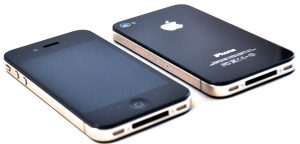
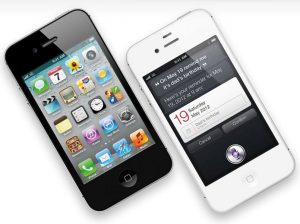
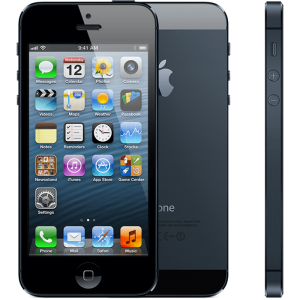
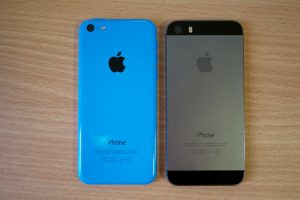

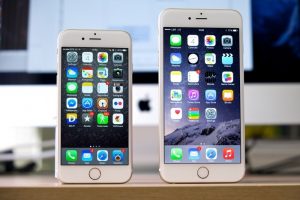
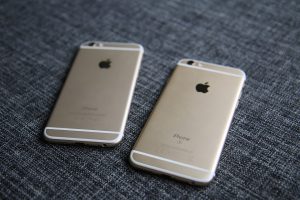

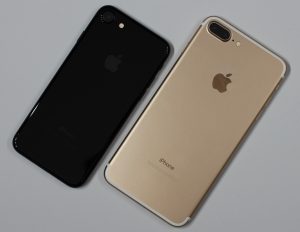

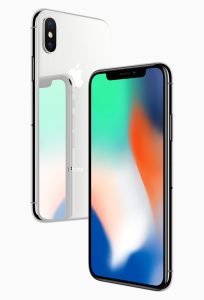
No comments:
Post a Comment